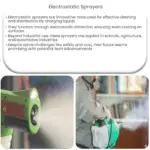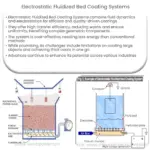Explore how electrostatic paint sprayers work, their benefits like increased transfer efficiency, uniform coverage, and reduced waste.
Understanding Electrostatic Paint Sprayers
Electrostatic paint sprayers have revolutionized the painting industry by providing a more efficient and even coating application method. This technology relies on the principles of electrostatics to improve paint transfer efficiency and deliver a superior finish. In this article, we will delve into the inner workings of an electrostatic paint sprayer and explore its various benefits.
How Electrostatic Paint Sprayers Work
At the core of an electrostatic paint sprayer is the process of atomization, which breaks down the paint into tiny, charged particles. This is achieved by applying a high voltage to the paint as it passes through the spray gun nozzle. The electrostatic charge causes the paint particles to repel one another, resulting in a fine, even mist.
- Charging the paint particles: As the paint flows through the nozzle, it comes into contact with an electrode that imparts a negative charge. This causes the paint particles to become negatively charged and repel each other.
- Attracting to the surface: The object being painted is grounded, making it neutral or positively charged. The negatively charged paint particles are attracted to the surface due to the electrostatic force between the charged particles and the grounded object. This results in a more uniform and efficient coating application.
- Wrap-around effect: Electrostatic paint sprayers take advantage of a phenomenon known as the “wrap-around effect. This occurs when the charged paint particles follow the contours of the object, ensuring an even and thorough coverage even in hard-to-reach areas.
Benefits of Electrostatic Paint Sprayers
- Increased transfer efficiency: Electrostatic paint sprayers are known for their high transfer efficiency, which can be up to 95% or more. This means less paint is wasted during the application process, resulting in cost savings and reduced environmental impact.
- Uniform coverage: The electrostatic force ensures that paint particles are evenly distributed on the surface, resulting in a smooth and uniform finish with fewer coats required.
- Reduced overspray: Since the charged paint particles are attracted to the grounded object, there is significantly less overspray compared to conventional paint sprayers. This leads to a cleaner work environment and reduced paint waste.
- Improved adhesion: The electrostatic attraction between the paint particles and the surface enhances the bond strength, providing better adhesion and durability of the coating.
- Accessibility: The wrap-around effect allows for more efficient coverage of complex shapes and hard-to-reach areas, making electrostatic paint sprayers ideal for a wide range of applications.
In conclusion, electrostatic paint sprayers offer numerous advantages over traditional painting methods. By leveraging the principles of electrostatics, these devices provide a more efficient, uniform, and cost-effective solution for applying coatings in various industries. As technology continues to advance, it is likely that we will see further improvements in electrostatic paint sprayer design and performance.




